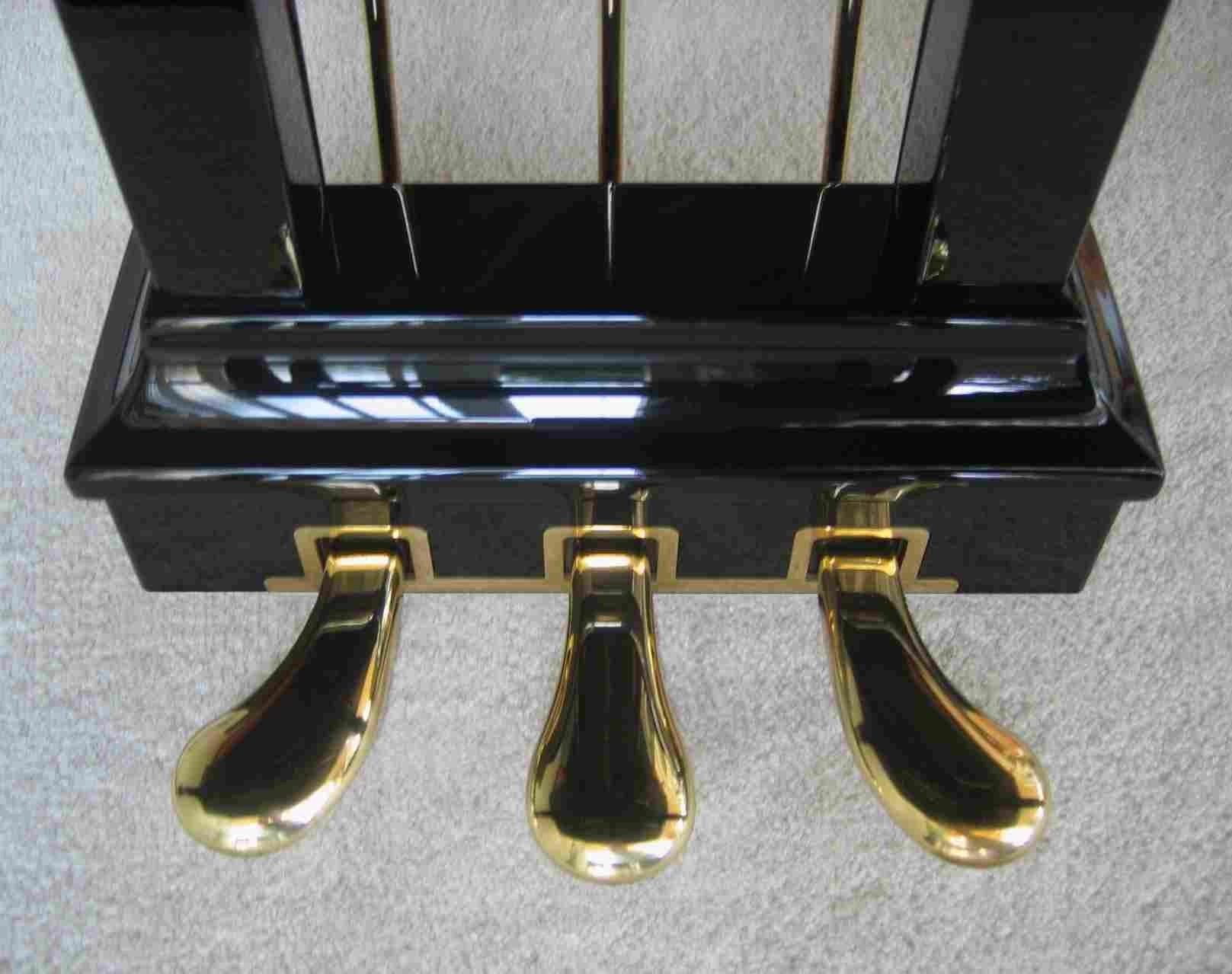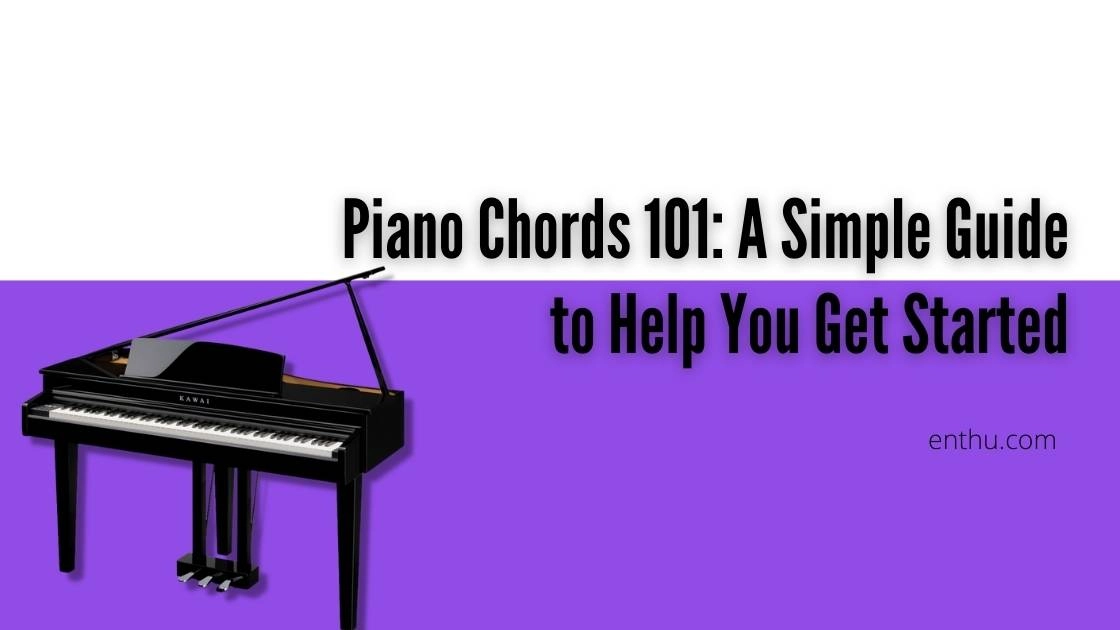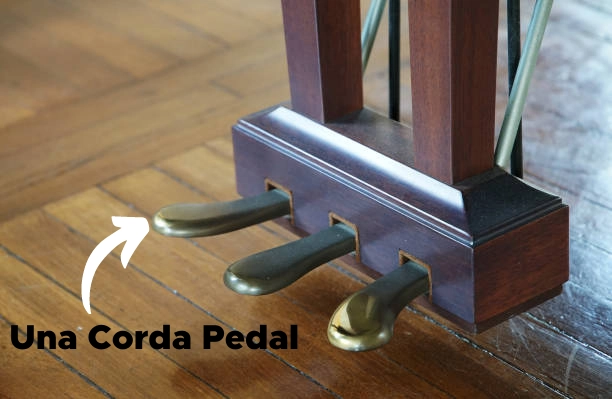If you are a piano buff, the three little levers placed under the piano surely have grabbed your attention! If you don't know the names already, those are called pedals. The
History of Piano Pedals
The history of piano pedals goes back to the earliest days of the instrument, with changes continuing right up until the late 19th century. Over time, both the number of pedals and their functions went through drastic transformations before the three-pedal system became standardized.
By now, you might be wondering: What exactly do the pedals on a piano do? Well, let’s dive in and explore!.

1. Pedals on a Piano
Three types of Pedals on an Acoustic Piano
Sustain pedal
Una Corda pedal
Sostenuto pedal
2. Sustain Pedal Sustain pedal
Commonly known as the damper pedal, is the most used pedal on upright and grand pianos. These pedals are placed on the far right side of an acoustic piano.

If you are using an electric/digital piano and it has only one pedal, there are high chances that the pedal will be a sustain pedal.
Check for the plugin with a ¼" input on the back of the keyboard.
3. What does the Damper Pedal do?
As the name suggests, the damper or sustain pedal sustains the sound of a note. It adds lingering effects to your music by making the note sustain long after you stop pressing the key.

4. How does it Work?
This is going to be a bit technical, but don't worry! I will try to make it easy for you.
When you press down on the far right pedal (sustain or damper) on an acoustic piano, it immediately raises the dampers that are placed on the top of the strings.
The dampers are used to stop the resonating sound of strings. So, when you press the pedal, it lifts up the damper, leaving the space for the strings to resonate.
This is how the damper pedals work on acoustic pianos. The same sound effect is created on electric pianos digitally.
5. Features of the Sustain Pedal
When you press down on the damper pedal, the strings create different frequencies for each note.
Apart from the main frequency, the strings create a lower-pitched frequency (sound) called overtone.
The mathematical pattern of overtones was discovered by Pythagoras.
An electric piano can never recreate the rippling effect of sustained piano chords.
Una Corda Pedal Usually
An acoustic piano comes with three pedals. The leftmost pedal is the Una Corda, AKA Soft Pedal, Out of these three. These peals are used to make the sound of particular notes / chords quieter or softer.

Electric pianos these days still don't have the technological support to provide you with the effect of the Una Corda.

1. How Does it Work?
Una Corda works in different ways for upright and grand pianos. Let's take a look at how it works on both of these pianos.
Upright Piano
The basic difference between an upright and grand piano is the hammer and key mechanism. If you peep inside an upright piano, you will see that the hammers strike not only one but three strings at the same time to create the desired sound.

The number of the strings a hammer presses down reduces at the lower end of the keyboard. Evidently, this way, the lower-end keys become thicker and give off a heavy soundscape.
The Una Corda offers a more drastic muting result in upright pianos than grands.
Grand Piano
The key and hammer mechanism are placed horizontally on a grand piano. When you press down on the Una Corda, the horizontally placed hammers move to their left and strike two strings instead of three.
This method means the sound of a particular note goes down (fades away) by a third. Earlier, the Una Corda made the hammers move even more to the left so that they could press down only one key at a time.
Some pianists even call this pedal 'one-string pedal' because of this. However, pianists didn't like the drastic change in sound it offered, and soon, the manufacturers changed its mechanism from 1 string to 2 strings.
2. Is the Una Corda still used by Professional Pianists?


Sostenuto Pedal
Coming to the last one, the Sostenuto pedal, unlike the other two, serves two different purposes for upright and horizontal pianos. Also, this pedal is optional, so you might not see this pedal on all the acoustic pianos.

1. Sostenuto on Upright Piano
This pedal is used to tone down the piano. When you press down on the middle pedal, a fabric strip or felt lowers down the hammers and strings. It works as a cover on the hammers so that the piano creates a soft soundscape.
You can easily achieve the 'toned down' sound by using the right pedal. So, what's the point of this pedal? Seems like it can only save you from your annoying neighbor or family members. No kidding, some even refer to sostenuto as a practice pedal.
2. Sostenuto on Grand Piano
The middle pedal or the sostenuto plays a completely different role on a grand piano. If you press down on the sostenuto pedal, it will sustain only the notes you play with it and a few after. However, this is not used much in grand pianos as well.
Historically, there's actually a handful of instances where you have to use this pedal. One such is when you want a particular note (usually a bass one) to sustain in the background, and you don't want other notes sustained, and you can't do it by holding the bass note by your finger.

Many pianists have complained that the mechanism of the sostenuto pedal is faulty and it is simply useless. Most piano manufacturers still use the middle pedal for beginners. However, it is a standard practice in Europe not to have this pedal on pianos.
3. What about the 4th pedal of the piano?
If you have a piano with 4 pedals on it, then congrats on being super-rich! Only one brand in this world makes pianos with 4 pedals. One 4-pedals piano from the house of Fazioli costs around $200000.
As you can understand, either you have to be a great musician or a rich person to own a Fazioli piano.
The 4th pedal is used to change the feel of the keys. By pressing down the pedal, you can either make the keys lighter or heavier according to your needs. Pianists like Lang Lang, Louis Lortie, and Angela Hewitt use Fazioli pianos.
4. How do you Read Pedal Notations?
Not all compositions come with pedal notations, but some composers are very particular about the usage of the pedals. Even if you are creating your own music, you might want to write down when to push down the pedal and raise it again.
Although the notations are a bit different for different pedals, the basics are more likely the same.
5. Pedal Notations
Sustain pedal (Damper pedal): Down = Ped; Up = ✱
Sostenuto pedal (Middle pedal): Down = Sost. Ped; Up = ✱
Una corda pedal (Soft pedal): Down = una corda; Up = tre corda


Conclusion
I know it seems a bit overwhelming to get introduced to the pedals for the first time! I mean, nobody loves extra pressure.
Believe me; pedaling gets easier with practice. So, stop sulking, hold the right posture, and play your heart out. Ask your piano instructor to help you in the initial phase. Looking forward to hearing your compositions! Till then, goodbye!
FAQs
1. When do you play the piano without pedals?
You don't need/to get a pedal whenever you are playing an electric piano. Most beginners would love not to use a pedal for their piano practices. You don't need piano pedals for most of the classical piano pieces (other than Debussy), as these were written way before the pedals were invented.
2. Can I use two pedals at the same time?
Yes, not even two; you can use all three pedals at the same time. However, you need to be very careful when you are using multiple pedals at the same time.
Remember that the more you use pedals, the sound of your music will sound more artificial. One tip: you need to use your left food with the right foot as well while pressing down two pedals.
3. Do electric pianos come with all three pedals?
No, most of the electric pianos that offer pedals come with only one - sustain pedal. However, you can add pedal plugins for the added legato effect to your music. Although the digital pedals aim to give you the same effect as pedals on an acoustic piano, they sound a bit unnatural. Actually, it depends on the






Comments